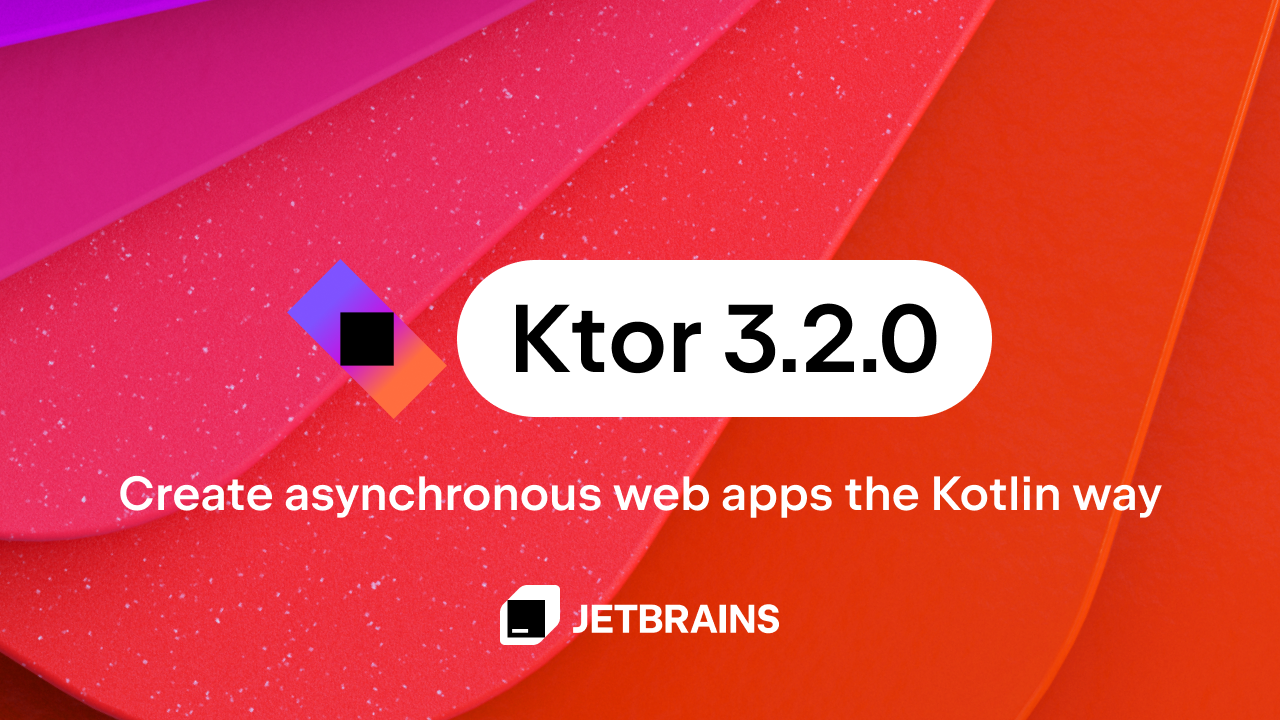Playground
Releases
Tools
Embedding Kotlin Playground
fun main(args : Array<String>) {
println("Hello Kotliner!")
println("Click this green button at the top right!")
}
Oh yes, this is a runnable Kotlin snippet embedded right in the blog post.
Note that you can not only run it, but you can also change the code:
// The code below doesn't compile. Add only one char to make it runnable again
fun main(args : Array<String>) {
val fix = "Kotlin "
val me = "is great"
println(fixme)
}
Cool, isn’t it? Note that completion works too.
Often you don’t want to show all the code in the snippet, but instead only the most interesting and substantial parts of it. This is possible as well.
fun main(args: Array<String>) {
//sampleStart
val hint = "Click the plus button to see the full code"
println (hint.length)
//sampleEnd
println("yes, 42")
}
You can also add tests:
import org.junit.Test
import org.junit.Assert
class TestExtensionFunctions() {
@Test fun testIntExtension() {
Assert.assertEquals("Rational number creation error: ", RationalNumber(4, 1), 4.r())
}
@Test fun testPairExtension() {
Assert.assertEquals("Rational number creation error: ", RationalNumber(2, 3), Pair(2, 3).r())
}
}
//sampleStart
// Implement extension functions Int.r() and Pair.r()
// and make them convert Int and Pair to RationalNumber.
fun Int.r(): RationalNumber = [mark]TODO()[/mark]
fun Pair<Int, Int>.r(): RationalNumber = [mark]TODO()[/mark]
data class RationalNumber(val numerator: Int, val denominator: Int)
//sampleEnd
You can use JavaScript as a target or even draw on a canvas:
/**
* In this example strange creatures are watching the kotlin logo.
* You can drag'n'drop them as well as the logo. Doubleclick to add
* more creatures but be careful. They may be watching you!
*/
package creatures
import jquery.*
import org.w3c.dom.*
import kotlin.browser.document
import kotlin.browser.window
import kotlin.js.Math
fun getImage(path: String): HTMLImageElement {
val image = window.document.createElement("img") as HTMLImageElement
image.src = path
return image
}
val canvas = initalizeCanvas()
fun initalizeCanvas(): HTMLCanvasElement {
val canvas = document.createElement("canvas") as HTMLCanvasElement
val context = canvas.getContext("2d") as CanvasRenderingContext2D
context.canvas.width = window.innerWidth.toInt();
context.canvas.height = window.innerHeight.toInt();
document.body!!.appendChild(canvas)
return canvas
}
val context: CanvasRenderingContext2D
get() {
return canvas.getContext("2d") as CanvasRenderingContext2D
}
abstract class Shape() {
abstract fun draw(state: CanvasState)
// these two abstract methods defines that our shapes can be dragged
operator abstract fun contains(mousePos: Vector): Boolean
abstract var pos: Vector
var selected: Boolean = false
// a couple of helper extension methods we'll be using in the derived classes
fun CanvasRenderingContext2D.shadowed(shadowOffset: Vector, alpha: Double, render: CanvasRenderingContext2D.() -> Unit) {
save()
shadowColor = "rgba(100, 100, 100, $alpha)"
shadowBlur = 5.0
shadowOffsetX = shadowOffset.x
shadowOffsetY = shadowOffset.y
render()
restore()
}
fun CanvasRenderingContext2D.fillPath(constructPath: CanvasRenderingContext2D.() -> Unit) {
beginPath()
constructPath()
closePath()
fill()
}
}
val Kotlin = Logo(v(250.0, 75.0))
class Logo(override var pos: Vector) : Shape() {
val relSize: Double = 0.18
val shadowOffset = v(-3.0, 3.0)
val imageSize = v(150.0, 150.0)
var size: Vector = imageSize * relSize
// get-only properties like this saves you lots of typing and are very expressive
val position: Vector
get() = if (selected) pos - shadowOffset else pos
fun drawLogo(state: CanvasState) {
size = imageSize * (state.size.x / imageSize.x) * relSize
// getKotlinLogo() is a 'magic' function here defined only for purposes of demonstration but in fact it just find an element containing the logo
state.context.drawImage(getImage("http://try.kotlinlang.org/static/images/kotlin_logo.svg"), 0.0, 0.0,
imageSize.x, imageSize.y,
position.x, position.y,
size.x, size.y)
}
override fun draw(state: CanvasState) {
val context = state.context
if (selected) {
// using helper we defined in Shape class
context.shadowed(shadowOffset, 0.2) {
drawLogo(state)
}
} else {
drawLogo(state)
}
}
override fun contains(mousePos: Vector): Boolean = mousePos.isInRect(pos, size)
val centre: Vector
get() = pos + size * 0.5
}
val gradientGenerator: RadialGradientGenerator? = null
get() {
if (field == null) {
field = RadialGradientGenerator(context)
}
return field
}
class Creature(override var pos: Vector, val state: CanvasState) : Shape() {
val shadowOffset = v(-5.0, 5.0)
val colorStops = gradientGenerator!!.getNext()
val relSize = 0.05
// these properties have no backing fields and in java/javascript they could be represented as little helper functions
val radius: Double
get() = state.width * relSize
val position: Vector
get() = if (selected) pos - shadowOffset else pos
val directionToLogo: Vector
get() = (Kotlin.centre - position).normalized
//notice how the infix call can make some expressions extremely expressive
override fun contains(mousePos: Vector) = pos distanceTo mousePos < radius
// defining more nice extension functions
fun CanvasRenderingContext2D.circlePath(position: Vector, rad: Double) {
arc(position.x, position.y, rad, 0.0, 2 * Math.PI, false)
}
//notice we can use an extension function we just defined inside another extension function
fun CanvasRenderingContext2D.fillCircle(position: Vector, rad: Double) {
fillPath {
circlePath(position, rad)
}
}
override fun draw(state: CanvasState) {
val context = state.context
if (!selected) {
drawCreature(context)
} else {
drawCreatureWithShadow(context)
}
}
fun drawCreature(context: CanvasRenderingContext2D) {
context.fillStyle = getGradient(context)
context.fillPath {
tailPath(context)
circlePath(position, radius)
}
drawEye(context)
}
fun getGradient(context: CanvasRenderingContext2D): CanvasGradient {
val gradientCentre = position + directionToLogo * (radius / 4)
val gradient = context.createRadialGradient(gradientCentre.x, gradientCentre.y, 1.0, gradientCentre.x, gradientCentre.y, 2 * radius)
for (colorStop in colorStops) {
gradient.addColorStop(colorStop.first, colorStop.second)
}
return gradient
}
fun tailPath(context: CanvasRenderingContext2D) {
val tailDirection = -directionToLogo
val tailPos = position + tailDirection * radius * 1.0
val tailSize = radius * 1.6
val angle = Math.PI / 6.0
val p1 = tailPos + tailDirection.rotatedBy(angle) * tailSize
val p2 = tailPos + tailDirection.rotatedBy(-angle) * tailSize
val middlePoint = position + tailDirection * radius * 1.0
context.moveTo(tailPos.x, tailPos.y)
context.lineTo(p1.x, p1.y)
context.quadraticCurveTo(middlePoint.x, middlePoint.y, p2.x, p2.y)
context.lineTo(tailPos.x, tailPos.y)
}
fun drawEye(context: CanvasRenderingContext2D) {
val eyePos = directionToLogo * radius * 0.6 + position
val eyeRadius = radius / 3
val eyeLidRadius = eyeRadius / 2
context.fillStyle = "#FFFFFF"
context.fillCircle(eyePos, eyeRadius)
context.fillStyle = "#000000"
context.fillCircle(eyePos, eyeLidRadius)
}
fun drawCreatureWithShadow(context: CanvasRenderingContext2D) {
context.shadowed(shadowOffset, 0.7) {
context.fillStyle = getGradient(context)
fillPath {
tailPath(context)
context.circlePath(position, radius)
}
}
drawEye(context)
}
}
class CanvasState(val canvas: HTMLCanvasElement) {
var width = canvas.width
var height = canvas.height
val size: Vector
get() = v(width.toDouble(), height.toDouble())
val context = creatures.context
var valid = false
var shapes = mutableListOf<Shape>()
var selection: Shape? = null
var dragOff = Vector()
val interval = 1000 / 30
init {
jq(canvas).mousedown {
valid = false
selection = null
val mousePos = mousePos(it)
for (shape in shapes) {
if (mousePos in shape) {
dragOff = mousePos - shape.pos
shape.selected = true
selection = shape
break
}
}
}
jq(canvas).mousemove {
if (selection != null) {
selection!!.pos = mousePos(it) - dragOff
valid = false
}
}
jq(canvas).mouseup {
if (selection != null) {
selection!!.selected = false
}
selection = null
valid = false
}
jq(canvas).dblclick {
val newCreature = Creature(mousePos(it), this@CanvasState)
addShape(newCreature)
valid = false
}
window.setInterval({
draw()
}, interval)
}
fun mousePos(e: MouseEvent): Vector {
var offset = Vector()
var element: HTMLElement? = canvas
while (element != null) {
val el: HTMLElement = element
offset += Vector(el.offsetLeft.toDouble(), el.offsetTop.toDouble())
element = el.offsetParent as HTMLElement?
}
return Vector(e.pageX, e.pageY) - offset
}
fun addShape(shape: Shape) {
shapes.add(shape)
valid = false
}
fun clear() {
context.fillStyle = "#D0D0D0"
context.fillRect(0.0, 0.0, width.toDouble(), height.toDouble())
context.strokeStyle = "#000000"
context.lineWidth = 4.0
context.strokeRect(0.0, 0.0, width.toDouble(), height.toDouble())
}
fun draw() {
if (valid) return
clear()
for (shape in shapes.reversed()) {
shape.draw(this)
}
Kotlin.draw(this)
valid = true
}
}
class RadialGradientGenerator(val context: CanvasRenderingContext2D) {
val gradients = mutableListOf<Array<out Pair<Double, String>>>()
var current = 0
fun newColorStops(vararg colorStops: Pair<Double, String>) {
gradients.add(colorStops)
}
init {
newColorStops(Pair(0.0, "#F59898"), Pair(0.5, "#F57373"), Pair(1.0, "#DB6B6B"))
newColorStops(Pair(0.39, "rgb(140,167,209)"), Pair(0.7, "rgb(104,139,209)"), Pair(0.85, "rgb(67,122,217)"))
newColorStops(Pair(0.0, "rgb(255,222,255)"), Pair(0.5, "rgb(255,185,222)"), Pair(1.0, "rgb(230,154,185)"))
newColorStops(Pair(0.0, "rgb(255,209,114)"), Pair(0.5, "rgb(255,174,81)"), Pair(1.0, "rgb(241,145,54)"))
newColorStops(Pair(0.0, "rgb(132,240,135)"), Pair(0.5, "rgb(91,240,96)"), Pair(1.0, "rgb(27,245,41)"))
newColorStops(Pair(0.0, "rgb(250,147,250)"), Pair(0.5, "rgb(255,80,255)"), Pair(1.0, "rgb(250,0,217)"))
}
fun getNext(): Array<out Pair<Double, String>> {
val result = gradients.get(current)
current = (current + 1) % gradients.size
return result
}
}
fun v(x: Double, y: Double) = Vector(x, y)
class Vector(val x: Double = 0.0, val y: Double = 0.0) {
operator fun plus(v: Vector) = v(x + v.x, y + v.y)
operator fun unaryMinus() = v(-x, -y)
operator fun minus(v: Vector) = v(x - v.x, y - v.y)
operator fun times(koef: Double) = v(x * koef, y * koef)
infix fun distanceTo(v: Vector) = Math.sqrt((this - v).sqr)
fun rotatedBy(theta: Double): Vector {
val sin = Math.sin(theta)
val cos = Math.cos(theta)
return v(x * cos - y * sin, x * sin + y * cos)
}
fun isInRect(topLeft: Vector, size: Vector) = (x >= topLeft.x) && (x <= topLeft.x + size.x) &&
(y >= topLeft.y) && (y <= topLeft.y + size.y)
val sqr: Double
get() = x * x + y * y
val normalized: Vector
get() = this * (1.0 / Math.sqrt(sqr))
}
fun main(args: Array<String>) {
//sampleStart
val state = CanvasState(canvas).apply {
addShape(Kotlin)
addShape(Creature(size * 0.25, this))
addShape(Creature(size * 0.75, this))
}
window.setTimeout({ state.valid = false }, 1000)
// You can drag this objects
//sampleEnd
}
fun <T> List<T>.reversed(): List<T> {
val result = mutableListOf<T>()
var i = size
while (i > 0) {
result.add(get(--i))
}
return result
}
Sometimes you don’t need or can’t make a runnable sample. In that case you can apply a highlight-only attribute and get the snippet exactly in the same style, but without the ability to run it.
val simpleText1 = "It's just an ordinary Kotlin snippet"
...
val simpleText239 = "It doesn't compile actually"
Embedded Kotlin playground and how it’s done
Historically, thousands of newcomers used try.kotlinlang.org as an interactive way of learning the language. In particular, Kotlin Koans online have been extremely popular. More advanced users use this playground for trying small snippets without opening an IDE, for example before pasting code as an answer on StackOverflow.
Embedded Kotlin Playground works on the same technology, but lets you write and run samples on your webpages. It compiles code on our backend server and then runs either in your browser (if the target platform is JS) or on a server (if the target is set to JVM).
Frontend
Adding an embedded Kotlin playground is as easy as writing a single line in the page header:
<script src="https://unpkg.com/kotlin-playground@1" data-selector="code"></script>
Now all the code blocks on the page will be converted to runnable Kotlin snippets. Of course, data-selector is customizable and you can apply the script only to some particular class. There’s also an option to configure a Kotlin playground manually:
<script src="https://unpkg.com/kotlin-playground@1"></script>
<script>
document.addEventListener('DOMContentLoaded', function() {
KotlinPlayground('.code-blocks-selector');
});
</script>
There’re also a lot of different installation and customization options. Read more in the documentation.
Backend
The backend part of the playground compiles the code and provides information for completion and highlighting. Generally, you shouldn’t need to bother about the backend and you may stick with our server unless you want to reference custom JVM libraries.
For writing examples that use some external library, for example when you’re creating interactive documentation for your library, you will have to configure and run your instance of the playground backend. It’s very easy to do: you’ll just need to add any dependencies, run two predefined Gradle tasks, then docker-compose up, and voila – the server is running. See these instructions for details.
Where it’s already used
- We already extensively use this technology for writing Kotlin documentation on the official website. All new bits of documentation are written using runnable samples (see Basic syntax, What’s new in 1.1 and 1.2, Lambdas and Coroutines. For some functions from the standard library, there are live examples as well (see
groupBy for example).
- Kotlin By Example is written with Kotlin-Playground live samples.
- We’ve also released a plugin for WordPress. It adds a
[kotlin] shortcode which allows embedding an interactive Kotlin playground in any post. All the samples on this page are written with the help of this plugin.

- On the Kotlin forum, you can use the
run-kotlin language in markdown syntax to answer questions, with full correctness guaranteed.

Where this can be used
Kotlin Playground improves the reading experience and increases the expressiveness of code examples. It allows readers to not only see the code but also run it, change it, play with it, and run it again. We encourage all authors to use runnable Kotlin snippets, especially when creating:
- Learning courses
- Supplementary materials for slides and books
- Documentation for libraries and frameworks
- Examples in blog posts
Later we are going to support scripting in Kotlin Playground as well.
fun main(args: Array<String>) {
//sampleStart
println("Let's Kotlin!")
//sampleEnd
}











